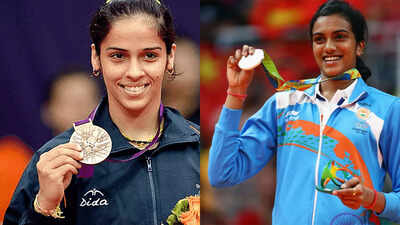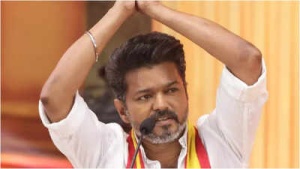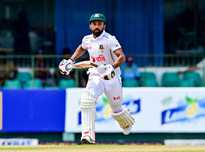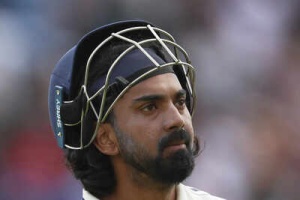After a period of unprecedented success led by stars like Saina Nehwal and PV Sindhu, Indian badminton is currently grappling with a significant downturn. The nation, once a force to be reckoned with on the global stage, is now facing a challenging period, marked by disappointing results and a lack of emerging talent to fill the void left by its established champions.

India's badminton ascent over the past decade and a half saw it carve a niche in a sporting landscape dominated by cricket. This rise was fueled by consistent performances and a stream of medals at major international events.
However, the current scenario paints a different picture. Recent poor results have raised concerns, and the absence of promising successors to Saina Nehwal and PV Sindhu suggests a bleak future. The days of consistent podium finishes at prestigious tournaments seem to be fading.
While the Thomas Cup victory in 2022 and the Asian Games men’s doubles gold in 2023 were celebrated achievements, the failure to have a single player in the semifinals of the All England Open in 2025 highlights the stark contrast in the team's current form.
Apart from Satwiksairaj Rankireddy and Chirag Shetty, and to some extent Lakshya Sen, the majority of Indian shuttlers are underperforming. The era when names like Saina Nehwal, PV Sindhu, Kidambi Srikanth, Sai Praneeth, HS Prannoy, and Satwik-Chirag were considered tournament favorites now feels like a distant memory.
The worrying trend began to emerge after HS Prannoy’s Malaysia Open Super-500 title in January 2023, with Indian players struggling to secure singles titles. Only the Satwik-Chirag duo managed to clinch a few titles. The Sudirman Cup performance this year was particularly disappointing, with India exiting in the group stage after losing to Denmark and Indonesia.
The last decade saw a surge in Indian badminton. Saina Nehwal’s Olympic bronze at the London Games was followed by PV Sindhu’s World Championship bronze in 2013. Alongside these female stars, players like Parupalli Kashyap, Kidambi Srikanth, Prannoy, and B Sai Praneeth also gained prominence. Srikanth even reached the World No. 1 ranking and won four Super Series titles in 2017, while Sindhu became world champion in 2019.
However, this momentum has waned. While Srikanth showed glimpses of his old form at the Malaysia Masters, his low ranking hindered his participation in subsequent tournaments. The Satwik-Chirag pair, despite their earlier success, are currently struggling with fitness issues.
The responsibility now falls on Lakshya Sen to lead the men’s singles challenge. Despite his potential, he has only managed to win two Super-500 titles and is yet to secure a Super-750 or Super-1000 title. The women’s singles scene is even more concerning, with no clear contender to take over from Saina and Sindhu.
One of the primary reasons for this decline is the lack of a robust system to consistently produce high-caliber players. Unlike countries like China and Malaysia, India lacks a well-defined feeder system to nurture young talent.
While Saina and Sindhu inspired many youngsters to take up badminton, the number of qualified coaches to train them remains insufficient. The existing coaches are also not adequately trained to meet the growing demand.
To address the current crisis, it is essential to identify and groom a core group of emerging players, dividing them into elite and developing categories to foster competition. Promising players need to be brought under one roof and provided with better training facilities.
The lack of attention to promising junior and sub-junior players across the country is a significant issue. While the Badminton Association of India (BAI) acknowledges the setback, it emphasizes its focus on enhancing coaching, injury management, and talent development.
At its recent annual general meeting, BAI unveiled a plan to drive the growth of badminton. However, more emphasis should be placed on grooming coaches. A structured coaching system with different categories for identifying, nurturing, and training players is crucial.
While BAI allocates funds to offer retainerships to Olympians and former internationals, the transition from champion player to successful coach is not always seamless. A long-term demand for trained coaches and a focus on talent identification and grooming are essential.
To revive Indian badminton, a comprehensive system with a clear three to five-year plan is needed. The association and coaches should collaborate to determine the tournament schedules for top shuttlers, especially during Olympic and Asian Games years.
Implementing a system similar to the one established by Pullela Gopichand across the country could yield positive results. With abundant talent available, a proper system must be implemented promptly to prevent Indian badminton from sliding into mediocrity.
Newer articles
Older articles
 Vijay Officially Named TVK's Chief Minister Hopeful for Tamil Nadu's 2026 Election
Vijay Officially Named TVK's Chief Minister Hopeful for Tamil Nadu's 2026 Election
 RJ Mahvash Prioritizes Work Over Buzz, Addresses Link-Up Speculation
RJ Mahvash Prioritizes Work Over Buzz, Addresses Link-Up Speculation
 Which Chair Would You Choose? This Personality Test Reveals Surprising Insights
Which Chair Would You Choose? This Personality Test Reveals Surprising Insights
 UNESCO's World Heritage Wonders: Unveiling 10 Iconic Sites, From Petra to the Pyramids
UNESCO's World Heritage Wonders: Unveiling 10 Iconic Sites, From Petra to the Pyramids
 JPG to PDF: A Comprehensive Guide for Graphic Designers & Professionals
JPG to PDF: A Comprehensive Guide for Graphic Designers & Professionals
 Shadman Islam Defends Bangladesh Batters After Day 1 Struggles Against Sri Lanka
Shadman Islam Defends Bangladesh Batters After Day 1 Struggles Against Sri Lanka
 iQoo Z9 Turbo: Rumored Specs Emerge – Snapdragon 8s Gen 3, 6000mAh Battery Highlighted
iQoo Z9 Turbo: Rumored Specs Emerge – Snapdragon 8s Gen 3, 6000mAh Battery Highlighted
 5 Often-Missed Warning Signs of Bladder Cancer You Need to Know
5 Often-Missed Warning Signs of Bladder Cancer You Need to Know
 Tick Bite Paralyzes Fitness Influencer: A Wake-Up Call for Outdoor Enthusiasts
Tick Bite Paralyzes Fitness Influencer: A Wake-Up Call for Outdoor Enthusiasts
 KL Rahul Puts Country First, Prioritizes England Tests Over Newborn Child
KL Rahul Puts Country First, Prioritizes England Tests Over Newborn Child